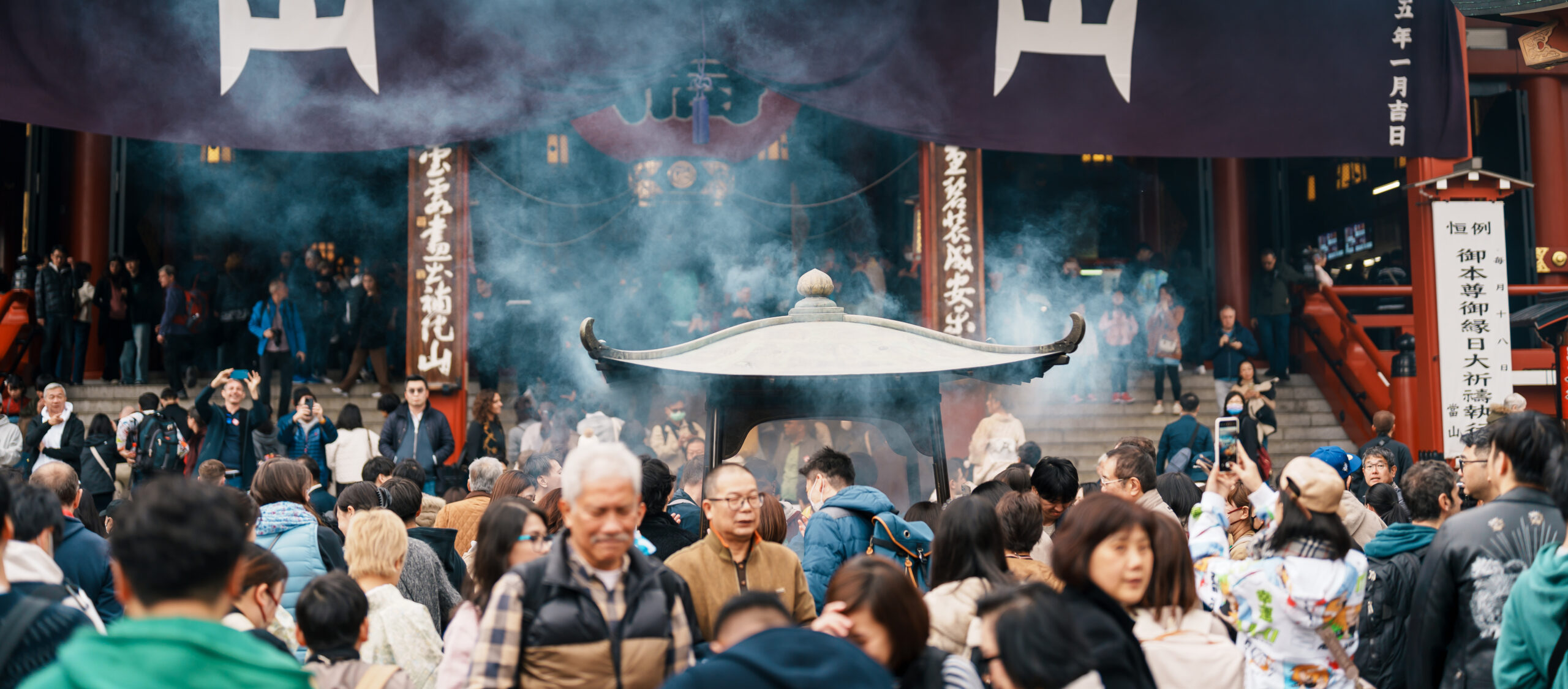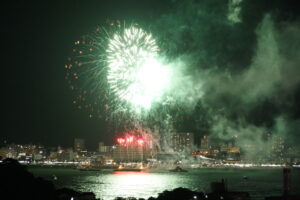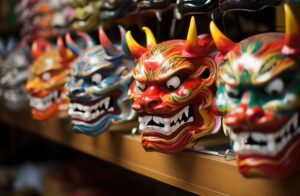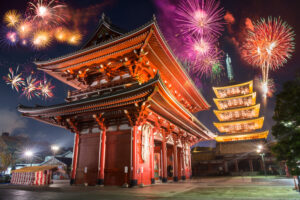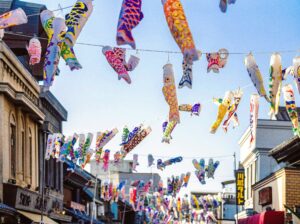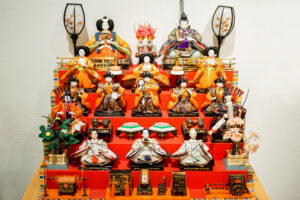Every year, the Sanja Matsuri lights up Tokyo with a burst of color, sound, and cultural pride. Celebrated in mid-May, this festival attracts millions of visitors, both local and international, eager to witness its vibrant processions and rich traditions. As one of the three great Shinto festivals in Japan, Sanja Matsuri is not just an event; it is a profound expression of Tokyo’s spiritual heritage, community spirit, and artistic legacy. Observing this festival offers a unique glimpse into the heart of Japanese culture and the city’s enduring connection to its past.
Sanja Matsuri: Tokyo’s Cultural Gem Shines Brightly
The Sanja Matsuri is a cornerstone of Tokyo’s cultural calendar, celebrated annually in the historic Asakusa district. This lively festival is dedicated to the three founders of the Asakusa Shrine, which serves as the festival’s spiritual heart. Over the years, the Sanja Matsuri has evolved into a grand spectacle that reflects the essence of Japanese culture—fusing together ancient tradition with modern vibrancy. The festival’s energetic atmosphere transforms the usually tranquil streets of Asakusa into a lively hub of celebration, where the sounds of taiko drums resonate and the air is filled with the scent of street food.
As people gather to partake in the festivities, the sense of community is palpable. Families, friends, and tourists come together to celebrate not only the heritage of the Asakusa district but also the resilience of the local culture. The festival serves as a reminder of the enduring spirit of Tokyo, where age-old traditions coexist harmoniously with contemporary life. The Sanja Matsuri is truly a cultural gem that captivates the hearts of all who experience it.
Moreover, the festival has garnered international attention, making it a significant event on the global stage. Visitors from around the world flock to Tokyo to witness the festivities, creating a melting pot of cultures within the confines of this traditional celebration. This has not only boosted local tourism but has also fostered a greater appreciation for Japanese heritage among global audiences, making the Sanja Matsuri a vibrant bridge between past and present.
The Historical Roots: Understanding Sanja Matsuri’s Origins
The origins of the Sanja Matsuri can be traced back to the early 17th century when the Asakusa Shrine was established to honor the three founders of the Senso-ji Temple. According to local lore, these two men—Hinzaburo and Kuniichi—were fishermen who discovered a statue of the Kannon, the Buddhist goddess of mercy, while fishing in the Sumida River. Their discovery led to the founding of one of Tokyo’s most significant temples and subsequently, the creation of the festival to celebrate their contributions.
Rooted in the Shinto belief system, the Sanja Matsuri is a reflection of the deep reverence for nature and the importance of spiritual connections in Japanese culture. The festival was initially celebrated as a way to pay homage to the deities and seek their blessings for a bountiful harvest and the well-being of the community. Over the centuries, the Sanja Matsuri has evolved, yet its core purpose remains intact: to honor the spirits of the founders and to express gratitude for their contributions.
As the festival grew in popularity, it also became a means of strengthening community bonds. Local residents would participate in the rituals and processions, reinforcing their connection to both the shrine and each other. This sense of community is a vital thread that runs through the festival’s history, illustrating how Sanja Matsuri has been a source of unity and cultural identity for the people of Asakusa.
The historical significance of Sanja Matsuri is also evident in the meticulous preservation of its rituals and practices. Many of the traditional elements have remained unchanged for generations, allowing participants to connect with their ancestors and uphold a legacy of cultural pride. This sense of continuity with the past is what makes the Sanja Matsuri not only a celebration of Tokyo’s heritage but also a living testament to its historical roots.
Key Rituals: A Deep Dive into the Festival’s Traditions
At the heart of the Sanja Matsuri are several key rituals that reflect the festival’s spiritual significance. The most notable is the “Mikoshi” procession, where portable shrines are carried through the streets. These mikoshi are believed to house the spirits of the deities, and their journey throughout the festival serves to bridge the divine and the earthly. The vibrant processions are filled with exuberance, as participants chant, dance, and carry the mikoshi, showcasing their devotion and enthusiasm.
The festival begins with a ceremonial purification ritual, designed to cleanse participants and the area around the shrine. This ritual highlights the importance of spiritual cleanliness in Shinto beliefs, setting the tone for the festivities to follow. Following purification, the mikoshi are paraded through the streets, marking the beginning of the main celebrations that typically last for three days. Each day is filled with unique activities, rituals, and events designed to engage the community and honor the spirits.
Another significant ritual is the “taiko” drumming, which accompanies many of the festival’s events. The rhythmic beats of the drums create an atmosphere of joy and celebration, while also signifying the heartbeat of the community. The drumming is not only a form of entertainment but also a way to invoke the deities and invite their blessings upon the festivities.
The “o-hayashi,” or traditional festival music, also plays a crucial role in the Sanja Matsuri. This lively music, performed by local musicians, enlivens the atmosphere and encourages participation from festival-goers. The combination of music, dance, and processions creates a powerful sensory experience that embodies the spirit of the festival.
In addition to the mikoshi processions, various performances, such as traditional dance and martial arts, are showcased throughout the festival. These performances not only highlight Japan’s rich artistic heritage but also serve to entertain and engage audiences, drawing them further into the celebration. The rituals of Sanja Matsuri are a vibrant tapestry that weaves together the past, present, and future of Tokyo’s cultural identity.
The Role of the Asakusa Shrine in Sanja Matsuri
The Asakusa Shrine, known as Asakusa Jinja, lies at the very heart of the Sanja Matsuri. This Shinto shrine, dedicated to the deities of the Senso-ji Temple, serves as the focal point for the festival’s activities and rituals. The shrine’s historical significance is paramount, as it represents the spiritual home of the community. For the locals, the Asakusa Shrine is more than just a religious site; it is a symbol of resilience, unity, and cultural pride.
Throughout the Sanja Matsuri, the shrine acts as the gathering place for participants and visitors alike. Rituals take place in the shrine’s precincts, including prayers and offerings made to the deities in hopes of receiving their blessings. The shrine’s presence imbues the festival with spiritual significance, reminding participants of their connection to the divine and the rich history that surrounds them.
The Asakusa Shrine is also home to numerous artifacts and treasures that reflect the history of the Sanja Matsuri. These include ceremonial items used in the rituals and artwork depicting the festival’s key events. Such artifacts serve as a tangible link to the past, preserving the stories and traditions that have shaped the festival over centuries.
One of the highlights of the festival is the presentation of the mikoshi at the Asakusa Shrine. The portable shrines are brought back to the shrine after their procession, completing a sacred journey that symbolizes the return of the deities to their spiritual home. This moment is filled with reverence and joy, as participants express their gratitude for the blessings received during the festivities.
In recent years, the Asakusa Shrine has also embraced modern technology to enhance visitor experiences, providing information and engaging displays that educate attendees about the festival’s history and significance. This blend of tradition and innovation ensures that the essence of the Sanja Matsuri is preserved while remaining accessible to new generations and visitors from around the world.
Processions and Parades: A Feast for the Senses
One of the most captivating elements of Sanja Matsuri is its grand processions and parades that thread through the bustling streets of Asakusa. These events are characterized by a kaleidoscope of colors, sounds, and scents that create a sensory feast for everyone involved. The streets come alive with the rhythmic pounding of taiko drums, the vibrant hues of traditional costumes, and the aroma of festival foods wafting in the air.
The mikoshi, or portable shrines, are the stars of the festival, and their procession is a sight to behold. Carried by teams of enthusiastic locals, these ornate shrines are hoisted high above their heads, with participants chanting and cheering in a display of devotion and community spirit. The energy is palpable, drawing both participants and onlookers into the jubilant atmosphere of the parade.
In addition to the mikoshi, various floats and performers join the processions, showcasing traditional Japanese arts such as dance and music. Participants dressed in colorful kimono and yukata can be seen dancing gracefully along the route, embodying the spirit of the festival. Each group adds its flair, ensuring that no two parades are alike and that the experience remains fresh and exciting for returning visitors.
The processions are not only a visual spectacle but also serve a deeper purpose: to invoke the spirits of the deities and seek their blessings for the community. As the mikoshi move through the streets, the sound of prayers and chants reverberates, creating a collective spiritual experience that resonates with everyone in attendance. The combination of tradition, spirituality, and joyous celebration fosters a sense of unity among participants.
Moreover, local businesses and vendors set up stalls along the parade route, offering a variety of traditional foods and crafts. The tantalizing scents of yakitori (grilled chicken skewers), ningyo-yaki (sweet cakes filled with red bean paste), and other local delicacies enrich the sensory experience of the festival. This delightful fusion of tastes and sights makes the Sanja Matsuri not just a celebration of heritage, but also a gastronomic adventure.
Engaging the Community: Local Involvement in the Festival
The Sanja Matsuri is a festival deeply rooted in community involvement, transcending mere celebration to become a collective expression of local identity. Residents of Asakusa play a pivotal role in organizing and participating in the festival, ensuring that its traditions are upheld and passed down through generations. This communal effort fosters a sense of pride among locals and creates a vibrant atmosphere that resonates throughout the festival.
Many families have participated in the Sanja Matsuri for generations, with roles passed down from parents to children. This continuity strengthens community ties and reinforces the significance of the festival as a cornerstone of local culture. For residents, the festival is not merely an annual event; it is a vital part of their lives and identity, fostering bonds among neighbors and celebrating shared heritage.
Local businesses also actively engage in the festival, contributing their resources and expertise to enhance the celebrations. Many shops and restaurants offer special festival-themed foods and promotions, encouraging both locals and visitors to partake in the festivities. The involvement of local enterprises reflects the festival’s role as a catalyst for economic activity, stimulating interest in the Asakusa district and drawing tourists from afar.
The Sanja Matsuri also offers opportunities for younger generations to connect with their cultural roots. Schools and community organizations often organize events and workshops to educate children about the history and significance of the festival, ensuring that they understand their heritage. This emphasis on education reinforces the importance of preserving traditions and instills a sense of responsibility in the youth to carry the festival forward.
Moreover, volunteers from the community come together to help with the logistics of the event, from organizing processions to ensuring the safety of participants and visitors. This collaborative spirit is a testament to the resilience and unity of the Asakusa community, showcasing their dedication to making the Sanja Matsuri a success year after year. The festival is, therefore, a collective effort that embodies the heart and soul of Tokyo, leaving a lasting impact on all who participate.
Traditional Attire: Symbolism Behind the Festival Costumes
Traditional attire plays a significant role in the Sanja Matsuri, with festival-goers donning unique garments that reflect the rich cultural heritage of Japan. The most recognizable attire is the “happi,” a short jacket often adorned with the festival’s emblem. Typically worn over a simple kimono or yukata, the happi symbolizes unity and pride among participants, who wear it as a badge of honor during the celebrations.
The colors and designs of the happi can vary significantly, with different neighborhoods and groups showcasing their distinctive styles. Each design tells a story, representing the history and identity of the community it comes from. The act of wearing these garments not only reinforces a sense of belonging but also enhances the overall visual spectacle of the festival, creating a vibrant tapestry of colors that captivates the eye.
Female participants often wear the traditional yukata, a lightweight cotton kimono suitable for the warm May weather. These garments are available in a variety of colorful patterns and designs, making them a popular choice for festival-goers. Wearing a yukata allows women to embrace the festival’s spirit while also maintaining a connection to traditional Japanese attire, treating the event as an opportunity to celebrate their cultural heritage.
In addition to the happi and yukata, other traditional garments such as “jinbei” (a two-piece outfit) for men and “tabi” (split-toe socks) are also common during the festival. These garments are not only comfortable and practical but also carry historical significance, linking participants to the customs and practices of their ancestors. The choice of attire during the Sanja Matsuri reflects both individuality and collective identity, creating a beautiful blend of personal expression and cultural celebration.
The significance of traditional attire goes beyond aesthetics; it embodies the spirit of the Sanja Matsuri and the values it represents. Wearing these garments signifies a commitment to preserving cultural traditions while also celebrating the vibrant community spirit that defines the festival. This collective embrace of traditional attire transforms the festival into a living museum of Japanese culture, allowing participants to connect with their heritage in a meaningful way.
Culinary Delights: Food That Reflects Tokyo’s Heritage
The Sanja Matsuri is not only a visual and musical feast but also a gastronomic adventure that showcases the culinary heritage of Tokyo. Street vendors line the festival routes, offering an array of traditional foods that tantalize the taste buds and evoke memories of Japan’s rich culinary culture. Each bite reflects the flavors and ingredients that have shaped Tokyo over the centuries, making the Sanja Matsuri a culinary celebration as much as a cultural one.
One of the highlights of the festival is the offering of yakitori, skewered and grilled chicken that is a staple at Japanese festivals. The smoky aroma wafts through the air, drawing hungry festival-goers to the vibrant stalls. Each vendor prides themselves on their unique marinades and grilling techniques, ensuring that every yakitori experience is distinct. This simple yet delicious dish embodies the communal spirit of the festival, as people gather to enjoy food that is best shared.
Another popular culinary delight is ningyo-yaki, small cakes filled with sweet red bean paste that are shaped like dolls. These delightful treats are not only visually appealing but also offer a sweet taste of tradition. Often enjoyed as a snack while wandering through the festival, ningyo-yaki adds a touch of sweetness to the Sanja Matsuri experience and serves as a reminder of the intricate craftsmanship that characterizes Japanese cuisine.
Takoyaki, or octopus balls, is another must-try dish during the festival. These savory snacks, made from a batter filled with diced octopus, green onions, and pickled ginger, are cooked in special molds and served hot with various toppings. The popularity of takoyaki reflects the evolving nature of Japanese street food, showcasing the blend of tradition and modernity that defines the Sanja Matsuri.
In addition to food stalls, many local restaurants offer special festival menus featuring regional dishes. These culinary experiences allow visitors to engage with Tokyo’s diverse food culture and explore the flavors that define the city. From comforting bowls of ramen to delicate sushi, the Sanja Matsuri provides an opportunity to taste the essence of Tokyo while celebrating the rich cultural heritage of Japan.
Music and Dance: The Rhythms of Sanja Matsuri
Music and dance are integral components of the Sanja Matsuri, infusing the festival with energy and vitality. The rhythmic beats of taiko drums resonate throughout the streets, creating a powerful atmosphere that draws everyone into the celebrations. Taiko drumming is not only a form of entertainment; it also serves to invoke the spirits and strengthen the community’s bonds as participants come together in joyous rhythm.
Traditional music, known as “o-hayashi,” accompanies the various performances and processions during the festival. This lively music, characterized by its infectious melodies and vibrant rhythms, encourages participation and celebration among festival-goers. The sounds of flutes, shamisen (a three-stringed instrument), and drums merge harmoniously, evoking a sense of nostalgia and pride in Japan’s artistic heritage.
Dance performances also take center stage during the Sanja Matsuri, showcasing traditional Japanese dance forms that have been passed down through generations. Participants often dress in colorful costumes and perform choreographed routines that reflect the history and culture of the region. These performances serve as a visual representation of the festival’s themes, celebrating the community’s connection to its past while engaging audiences in the present.
The inclusion of community members in musical and dance performances reinforces the festival’s commitment to inclusivity and participation. Local schools, dance troupes, and cultural organizations come together to share their talents, creating an atmosphere of collaboration and creativity. The result is a dynamic showcase of artistic expression that captivates audiences and fosters a sense of belonging for all involved.
Furthermore, modern influences have begun to permeate the musical landscape of the Sanja Matsuri, with contemporary artists and genres being incorporated into the festivities. This evolution reflects the festival’s adaptability and willingness to embrace change while still honoring its traditional roots. The fusion of old and new creates a vibrant atmosphere where the past and present coexist, inviting everyone to celebrate Tokyo’s rich cultural tapestry.
Visitor Experience: What to Expect at the Celebration
Attending the Sanja Matsuri offers visitors a unique opportunity to immerse themselves in the rich cultural heritage of Tokyo. With the festival attracting millions of attendees each year, the atmosphere is electric, filled with laughter, excitement, and the vibrant sounds of celebration. For newcomers, navigating this bustling event can be an adventure in itself, with countless sights, sounds, and tastes to explore.
As visitors approach Asakusa, they are greeted by the sight of colorful banners and decorations that adorn the streets, marking the festival’s presence. The lively processions captivate the attention of onlookers, inviting them to join in the festivities. With various mikoshi and performers parading through the streets, observers can expect to witness a dazzling array of traditional attire, skillful dance, and rhythmic drumming that creates an unforgettable experience.
One of the highlights of the Sanja Matsuri is the opportunity to engage with the local community. Visitors are encouraged to join in the festivities, whether by donning a happi jacket or participating in the processions. This inclusivity fosters a sense of belonging and allows attendees to forge meaningful connections with the locals, who are eager to share the significance of the festival.
The culinary experience at the Sanja Matsuri is another essential aspect for visitors to enjoy. With numerous food stalls offering an array of traditional delights, attendees can indulge in popular festival foods like yakitori, ningyo-yaki, and takoyaki. Exploring the various culinary offerings provides a deeper understanding of Tokyo’s food culture, turning the festival into a delightful gastronomic journey.
As evening falls, the atmosphere of the festival transforms further, with lanterns illuminating the streets and creating a magical ambiance. Visitors can take part in nighttime festivities, including additional performances and events that showcase the vibrancy of the Sanja Matsuri. This enchanting experience, enhanced
